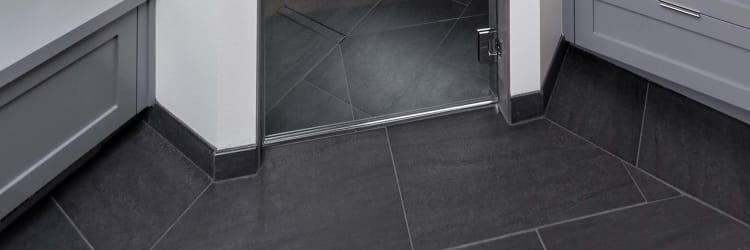Is all tile flooring the same?
No. They all have different strength and absorption levels, affecting how and where they are used.
Read labels thoroughly. Also, describe your project to the retailers at the tile store.
The basic differences
Floor tiles are heavier, meant to withstand the weight, and less slippery. On the other hand, wall tiles are thinner and, since traction isn't an issue, can be made of glass or some other sleek material.
You can use a floor tile on the wall, but not the other way around. They might, however, be too thick and clunky for your design.
Even designated floor tiles have different strengths
This is identified on the label as a category or class. For the floor, you'll want C-3 or C-4. The tile shop professionals will explain further.
Porcelain and ceramic flooring primer
Porcelain is a C-4, ideal for busy, heavily trafficked indoor floors or on the patio, deck floor, or poolside. It can stand up to the most severe weather.
Available in countless designs and colors, porcelain can be made to look like anything, including wood, stone, fabric, and leather.
The 4 X 4 square is a C-3 tile. It can be used as a floor tile or on walls, countertops, tub, and shower surrounds. Mosaics are tiny but durable and often used on bathroom floors; people also like the many grout lines which increase traction.
Terracotta bricks are so durable they are used primarily outside. They've come indoors because that beautiful reddish-brown color works well with rustic decor. Subway tiles can be used in indoor, low-traffic rooms only.
Our flooring company has it all!
Metro Floors was founded in 1981. You will see a wide assortment of colors, finishes, textures, and designs in our floor tile inventory.
Visit our showroom today! We're in Lancaster, CA, convenient to Quartz Hill, Rosamond, and Palmdale; you'll be glad and walk out with a free tile flooring quote.








